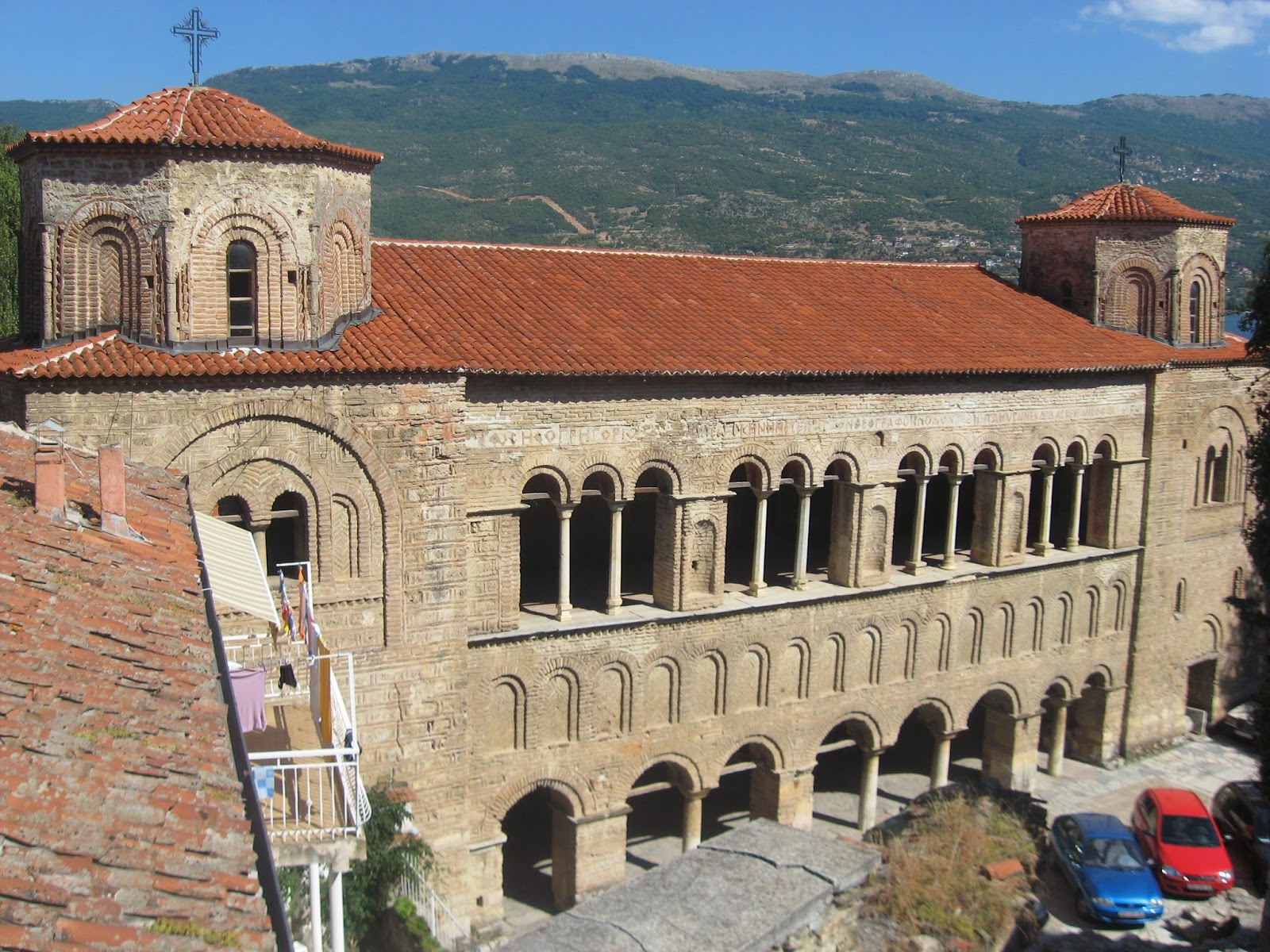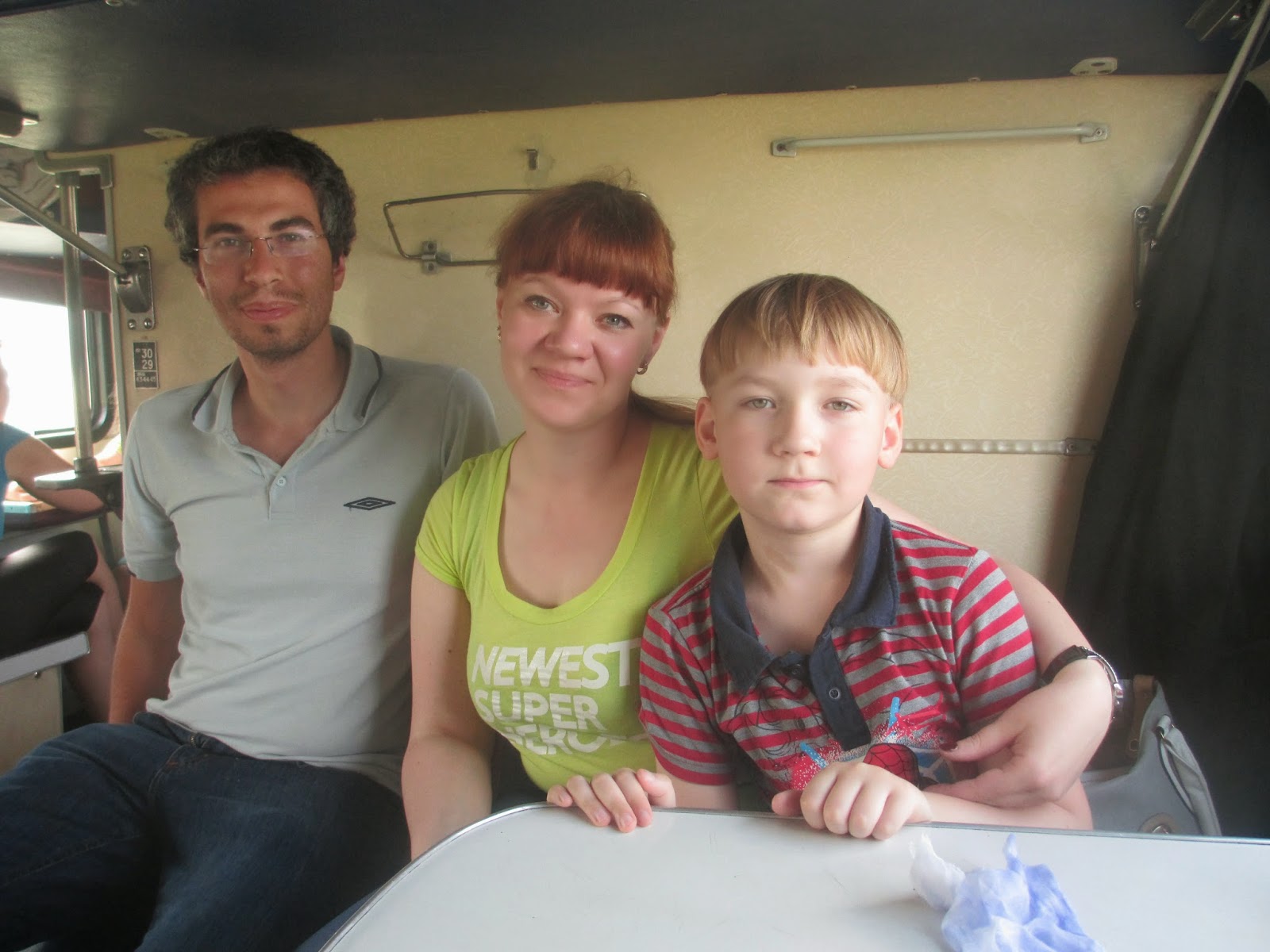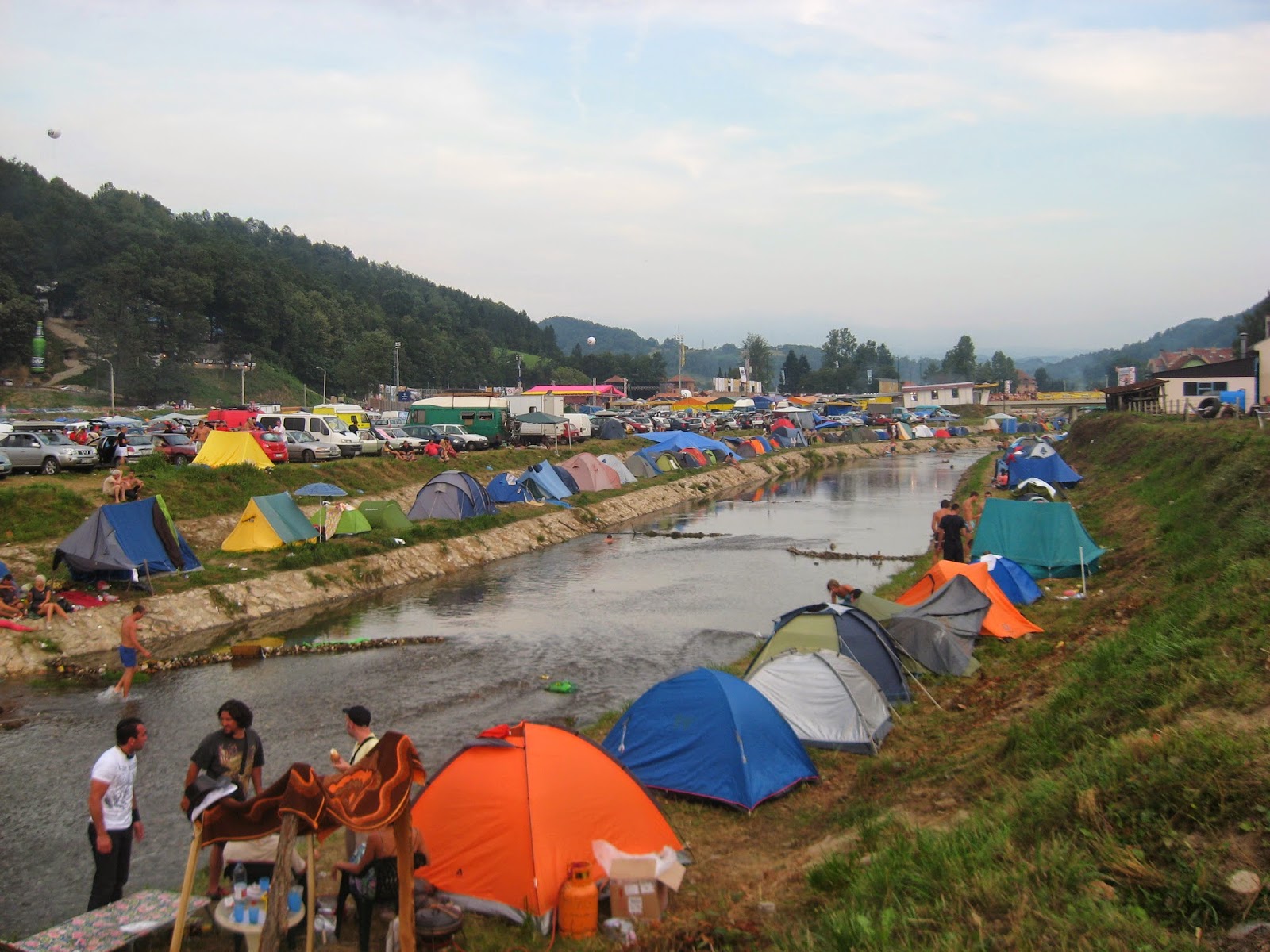
Here is an example of the beautiful train tickets sold in Russia (first photo). They are printed predominantly in salmon tones, similar to 5.000 rubles banknotes, the bills with the highest face value, with the map of the country and a train as watermark.
Tickets can be acquired at the several ticket offices open across the country and through the internet. The website of Russian Railways (RZhD) has an English version, very poor though. Therefore, it is useful to have some basics of Russian language and specificities about Russian trains and services.
When you buy a ticket you have usually 3 classes:
1st Class (Deluxe)
2nd Class ("Kupe") - compartiment with 4 bunk beds
3rd Class ("Platskart") - common carriage full of bunk beds (about 50)
Note: All timetables concerning departures and arrivals follow Moscow time, meaning that indepently where you are, and Russia has 11 time zones, there is a single time reference. This can be a bit confusing, because you can travel between two cities very far from Moscow and the time you booked, or written on the tickets, can be totally different from the local time. Therefore, Moscow time is a kind of "lingua franca"for travellers in Russia. In fact, the clocks hanging at train stations, all around the country, follow Moscow time.
I remember, in a mix of nostalgia and relief, the times I went to Moscow Terminal Station, in Saint Petersburg, to buy tickets for my trips. Nostalgia remembering unforgettable trips, relief because it can be a long and tedious process.
You basically come to the train station and see several ticket offices open, all of them with very long queues. It is logical, train is the most popular and viable mean of transport in Russia. The only thing we can do is to move to to end of the queue and wait patiently our turn to come. In the worst case scenario, and it already happened to me, you are the next person and the ticket office closes for lunch or what they call "technical break". Well, let's be optimistic and not think about this... It is good to check the timetable of the ticket office for not getting this kind of surprises.
Maybe for this reason Russians really do not like queuing. It is usual situation when someone comes and asks: "Who is the last?". Like the notion of queue was not enough self-explanatory about who is the last... However, this is in Europe where queues are made accordingly. In Russia there are small differences. There are people who follow the queue, with their eyes, from distance, others who come to the station in groups and spread to try their luck in multiple queues, or even the ones who ask for a little favor: "Excuse me, can you please have a look at my bag for a moment? I will be right back." Well, let's stop talking about something so boring like staying in queue.
Actually I should be already in the black list of Russian stations, because of all the tickets (second photo) I made the workers to print and my very long name that made them go close to madness: Pedro Miguel Neves Pimenta Freire- Yes, we have very long names in Portugal. I would like to recall a small episode that happened when I went to buy tickets for the very first time in Russia. At this time the lady looked very surprised at my passport with so many names and asked: "So many names...! And which one is your patronymic?" I reply that I do not have any. "5 names and you do not have a patronymic?" I answer again that no, these are two given names and 3 family names". She looks again at my passport and gives it back to me: "Then I am not able to sell you the tickets." I get speechless for a moment. I would never expect to try to buy tickets and getting my order refused for not having a patronymic (name of the father). Perhaps she wants to check my the name of my parents on my ID? Obviously I insist. In Russia if a foreigner is not persistent and gives up easily he is done. She takes my passport again and introduces the data. Suddenly, there are once again signs of difficulties: "Your name is too long! It is not possible to insert it..." I can't hide my impatience and tell her that I have names if she could be so kind to choose any possible combination of them and give me the tickets. And it was like that. For sure this quite an usual situation, but I can say that my name was never indifferent to eyes of the ladies working at Russian ticket offices....
Information on the ticket (third photo)
First line: Train number. Date and time of departure. Carriage number and class. Price. Tariff.
Second line: Stations of departure and arrival.
Third line: Seat number.
Forth line: Internal codes.
Fifth line: Passport number. Family names and first names' initials.
Sixth line: Total price and supplements.
Seventh line: Date and time of arrival.
Eigth line: Note: "Departure and arrival times on Moscow time".
Aqui está um exemplar dos bonitos bilhetes vendidos na Rússia (primeira foto). Estes são impressos em tons predominantemente cor de salmão, semelhantes à nota de 5.000 rublos, a nota de maior valor facial, com o mapa da federação e um comboio em marca de água.
Os bilhetes podem ser adquiridos nas muitas bilheteiras abertas por toda Rússia e através da internet. A página da internet da Companhia de Caminhos-de-Ferro Russos (RJD) apresenta uma versão em inglês, se bem que bastante pobre. Deste modo, convém ter alguns conhecimentos de russo e das especificidades e serviços oferecidos nos comboios russos.
Nota: Todos horários relativos a partidas e chegadas seguem o fuso horário de Moscovo, o que significa que, independente da localização e, a Rússia possui 11 fusos horários diferentes, há apenas um tempo de referência. Isto pode ser um pouco confuso, porque uma pessoa pode estar a viajar entre duas cidades bem distantes de Moscovo e a hora de partida que reservou, ou que se encontra escrita no bilhete, pode ser totalmente diferente da hora local. Assim, a hora de Moscovo é uma espécie de "língua franca" para os viajantes na Rússia. De facto, os relógios existentes nas estações ferroviárias do país seguem a hora de Moscovo.
Note: All timetables concerning departures and arrivals follow Moscow time, meaning that indepently where you are, and Russia has 11 time zones, there is a single time reference. This can be a bit confusing, because you can travel between two cities very far from Moscow and the time you booked, or written on the tickets, can be totally different from the local time. Therefore, Moscow time is a kind of "lingua franca"for travellers in Russia. In fact, the clocks hanging at train stations, all around the country, follow Moscow time.
Recordo, num misto de saudade e alívio, as muitas vezes em que me dirigi à Estação Terminal de Moscovo, em São Petersburgo, para comprar bilhetes para as minhas viagens. Saudade por recordar viagens inesquecíveis, alívio por ser um processo algo moroso.
Uma pessoa chega basicamente à estação e depara-se com várias bilheteiras abertas, porém todas com longas filas. É lógico, o comboio é o meio de transporte mais popular e viável na Rússia. Resta dirigir-se para o fim da fila e esperar pacientemente que a sua vez chegue. O pior que pode acontecer, e já me aconteceu, é ser a próxima pessoa para ser atendida e a bilheteira fechar para almoço ou aquilo a que eles chamam de "pausa tecnológica". Bem, vamos ser optimistas e não pensar nisso... Convém verificar o horário da bilheteira para não ter este tipo de surpresas.
Talvez por essa razão, os russos não gostam de filas. É típico chegar alguém e perguntar: "Quem é o último?". Como se a própria noção de fila não implicasse que a última pessoa não representasse o último lugar... Mas, isso é na Europa onde as filas se desenvolvem ordeiramente. Na Rússia existem pequenas nuances. São frequentes as pessoas que acompanham a fila, com os olhos, à distância, outras que vêm comprar bilhetes em grupo para tentar a sua sorte em múltiplas filas, ou mesmo aquelas que pedem um favorzinho aos seus companheiros de infortúnio: "Olhe, pode olhar pelo meu saco só um momento? Eu já venho." Mas, chega de falar de algo tão aborrecido como estar numa fila.
Na verdade, já devo estar na lista negra das estações russas, pelos muitos bilhetes (segunda foto) que fiz as empregadas imprimir e pelo meu nome longo, que as consegue levar aos limites da loucura: Pedro Miguel Neves Pimenta Freire. Sim, temos nomes bastante longos em Portugal. Gostaria de relembrar um pequeno episódio, que se passou quando comprei bilhetes pela primeira vez na Rússia. Dessa vez, a senhora, olhando estupefacta para o meu passaporte com tantos nomes e pergunta-me: "Tantos nomes...! E qual é o seu patronímico?". Respondi-lhe que não tinha. "5 nomes e não tem patronímico?" Respondo-lhe educadamente que não, que são 2 nomes próprios e 3 apelidos. Olha mais uma vez para o meu passaporte e devolve-mo: "Então não lhe posso vender os bilhetes..." O meu queixo cai de espanto. Nunca esperaria ver recusada a compra de bilhetes por não ter um patronímico (nome do pai). Será que quer ver a minha filiação no meu bilhete de identidade? Como é óbvio insisto. Na Rússia o estrangeiro que não for persistente e ceder à primeira está feito. Volta a pegar no meu passaporte e a digitar os dados. De repente, notam-se novamente dificuldades: "O seu nome é muito longo! O sistema não permite digitá-lo." Não consigo esconder a irritação agora e digo-lhe que, já que tenho 5 nomes, que escolha a combinação dos que forem precisos mas que por favor me venda os bilhetes. E assim foi... É certo que esta tratou-se de uma situação excepcional, mas posso dizer que passei por outras em que o meu nome não passou indiferente aos olhos das senhoras das bilheteiras russas...
Informação no bilhete (terceiro foto)
Primeira linha: Número do comboio. Data e hora da partida. Número da carruagem e classe. Preço. Tarifa.
Segunda linha: Estações de partida e chegada.
Terceira linha: Número do lugar.
Quarta linha: Códigos internos.
Quinta linha: Número do passaporte. Apelido e nome.
Sexta linha: Preço total e suplementos.
Sétima linha: Data e hora de chegada.
Oitava linha: Nota: "Horários de partida e chega no fuso horário de Moscovo".


















